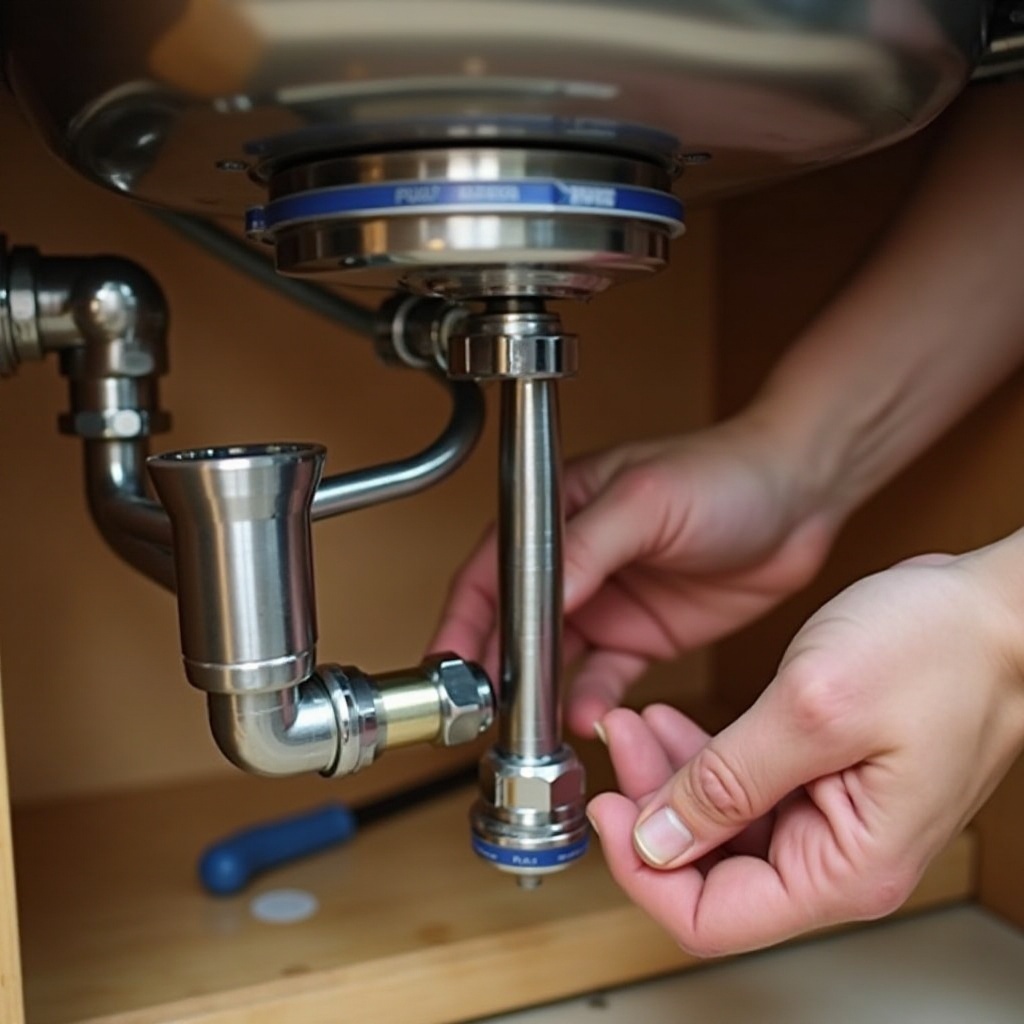Introduction
Connecting your dishwasher drain hose to the disposal is crucial for optimal performance. Proper installation ensures your dishwasher drains efficiently, keeping your kitchen clean and your machine running smoothly. This guide provides a step-by-step process to help you connect the hose securely and troubleshoot common issues. With the right tools and clear instructions, you can achieve a leak-free connection.

Tools and Materials Checklist
Before you begin, gather the necessary tools and materials for the job. Having everything ready will make the process smoother and quicker.
Tools:1. Adjustable wrench2. Screwdriver3. Pliers4. Utility knife
Materials:1. Dishwasher drain hose2. Hose clamp3. Teflon tape (optional)4. Bucket or towels (for potential spills)
Pre-Installation Preparation
It is vital to prepare adequately before starting the installation process to ensure a smooth workflow.
Safety Measures
Ensure your safety by turning off the power and water supply before starting the installation. Unplug the dishwasher and locate the water valve under the sink to shut it off. This prevents accidental shocks or water damage during the process.
Clearing the Workspace
Clear out the area under your sink to give yourself ample room to work. Remove any stored items and place a bucket or towels nearby to catch any water that might spill when disconnecting the old hose.
Step-by-Step Installation Process
With the preparations complete, you can now move on to the installation process.
Disconnect Power and Water Supply
- Unplug the dishwasher from the power outlet.
- Turn off the water supply valve under the sink.
- Place a bucket under the hose connections to catch any residual water.
Locate the Drain Port on the Disposal
- Find the drain port on the garbage disposal unit. It is typically positioned on the side.
- Check for a knockout plug inside the drain port. If present, use a hammer and screwdriver to remove it.
Connect the Dishwasher Drain Hose
- Attach one end of the drain hose to the dishwasher's drain outlet.
- Secure it with a hose clamp, tightening it with a screwdriver.
Secure with Hose Clamp
- Attach the other end of the drain hose to the disposal's drain port.
- Use a hose clamp to secure the connection tightly. Ensure the hose is not kinked or bent to avoid blockages.
Check for a Knockout Plug
- Double-check the drain port on the disposal to ensure the knockout plug is fully removed.
- This step is vital as a plugged port will prevent proper drainage.
Testing the Connection
After securing the hose, it is essential to test the connection for any leaks or issues.
How to Test for Leaks
- Turn on the water supply valve.
- Plug in the dishwasher and run a short wash cycle.
- Observe the connections for any signs of leaks.
Running Initial Dishwashing Cycle
- Once no leaks are detected, run a full dishwashing cycle.
- Monitor the hose connection and disposal unit to ensure efficient drainage.

Troubleshooting Tips
Problems may arise even with careful installation. Here is how to address some common issues.
Addressing Leaks
- If you notice leaks, tighten the hose clamps further.
- Use pliers to ensure the clamps are securely fastened.
- If leaks continue, consider applying Teflon tape to the connections.
Fixing Improper Drainage
- Check the hose for kinks or blockages.
- Ensure the knockout plug was entirely removed.
- If drainage issues persist, consult your dishwasher's manual or contact a professional.
Maintenance Tips
Proper maintenance can prolong the life of your dishwasher and disposal unit.
Regular Checks
- Periodically check the hose connections for any signs of wear or looseness.
- Tighten clamps as needed to maintain a secure connection.
Cleaning the Drain Hose
- Clean the drain hose periodically to prevent clogs.
- Use a mixture of vinegar and baking soda to remove any buildup inside the hose.

Conclusion
Connecting your dishwasher drain hose to the disposal is a straightforward task with the right guidance. Following these steps ensures a secure, leak-free connection that keeps your dishwasher running efficiently. Regular maintenance can help prevent future issues, saving you time and effort in the long run.
Frequently Asked Questions
Why is my dishwasher not draining properly after connecting the hose?
Ensure the knockout plug in the disposal drain port is fully removed. Check the hose for kinks and confirm that the connections are tight and secure.
Can I connect the dishwasher drain hose without a clamp?
While it’s technically possible, using a clamp ensures a secure connection and prevents leaks. It’s highly recommended to use a clamp for safety and efficiency.
How often should I check the connection for leaks?
Regularly inspect the connections every few months or if you notice any signs of drainage issues. Tightening the clamps and cleaning the hose can prevent potential problems.
